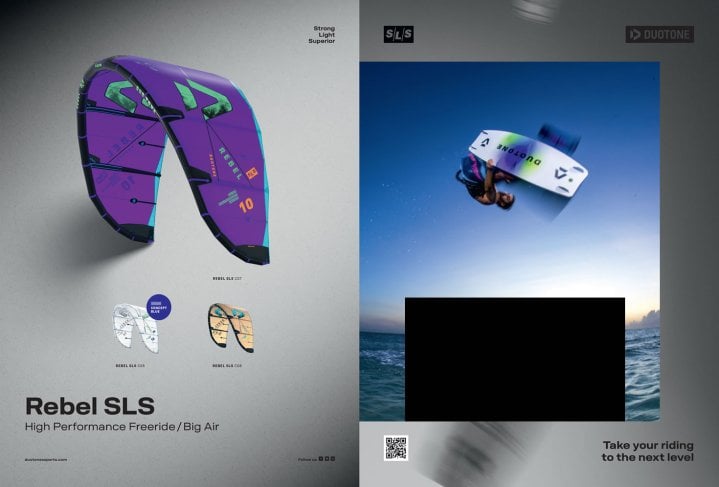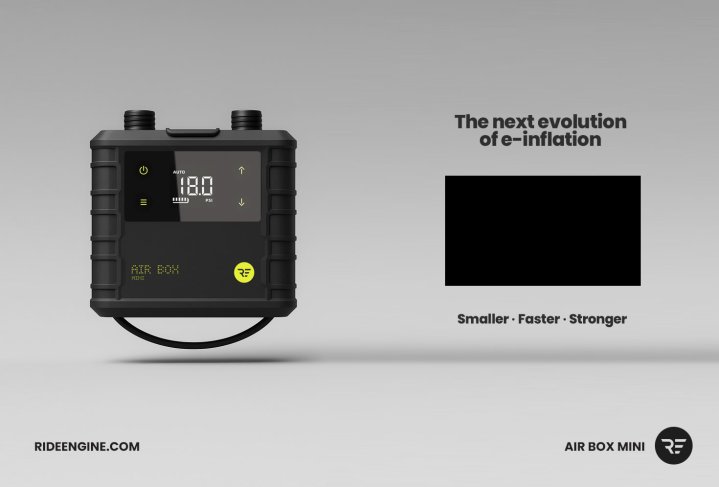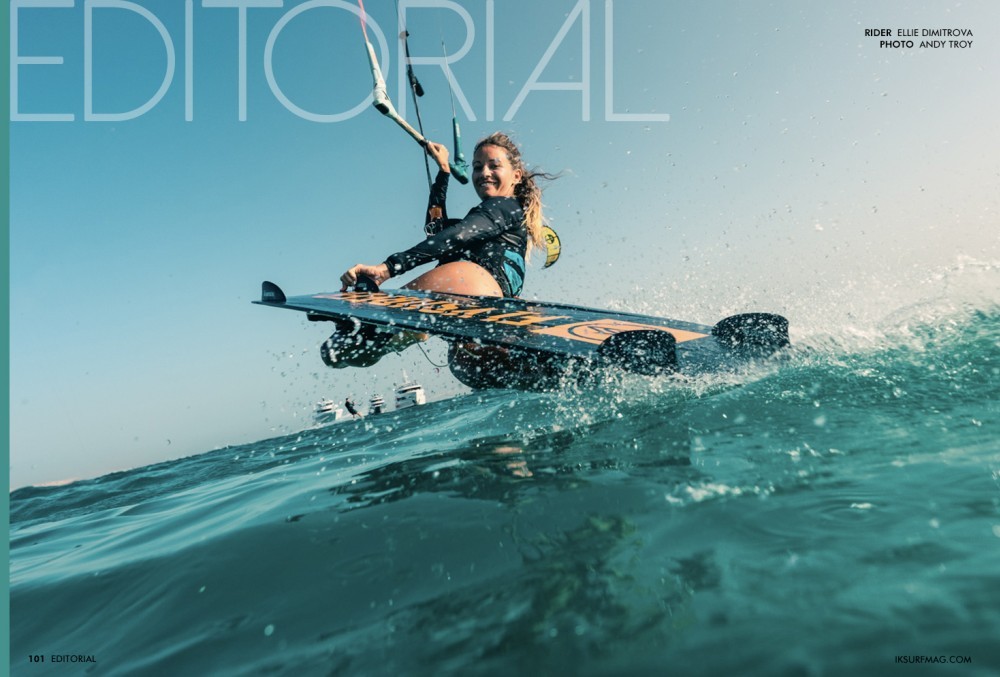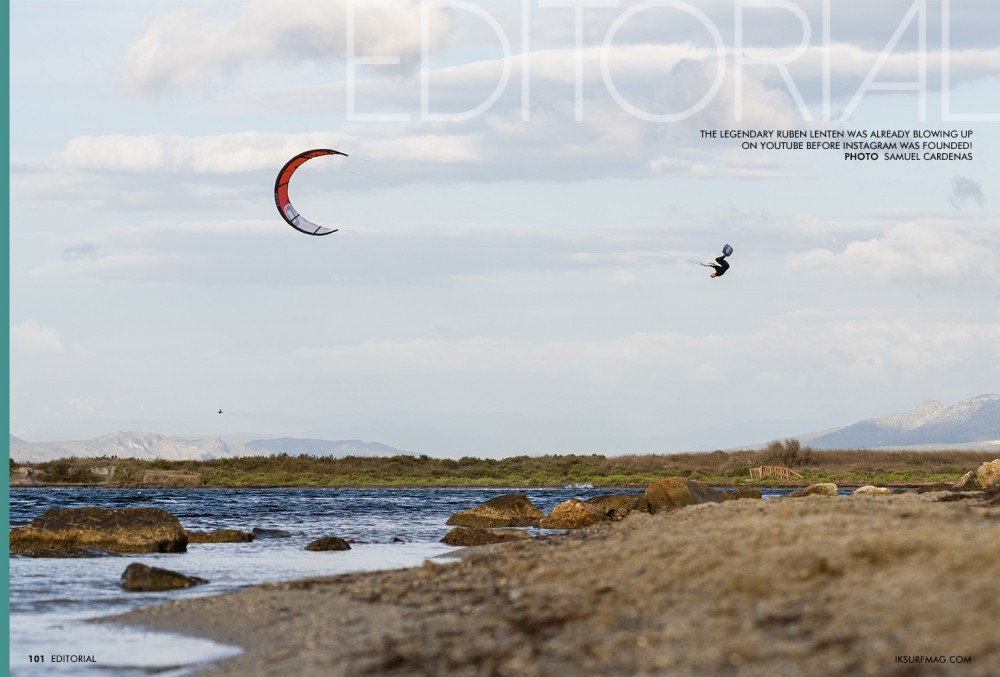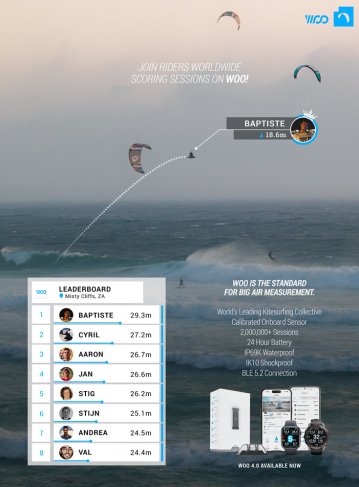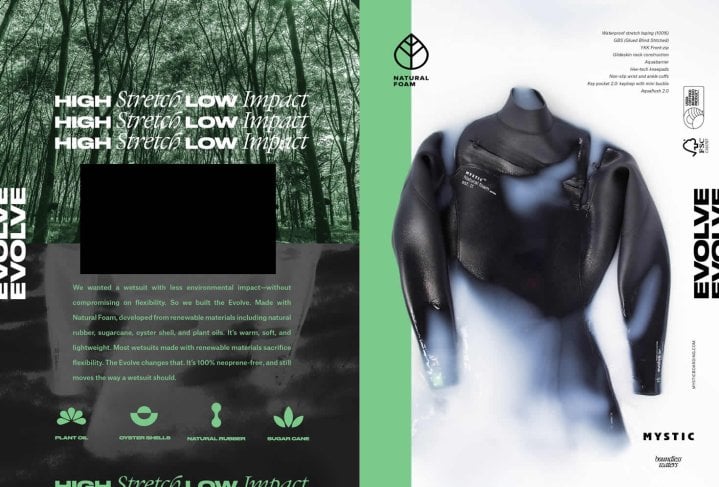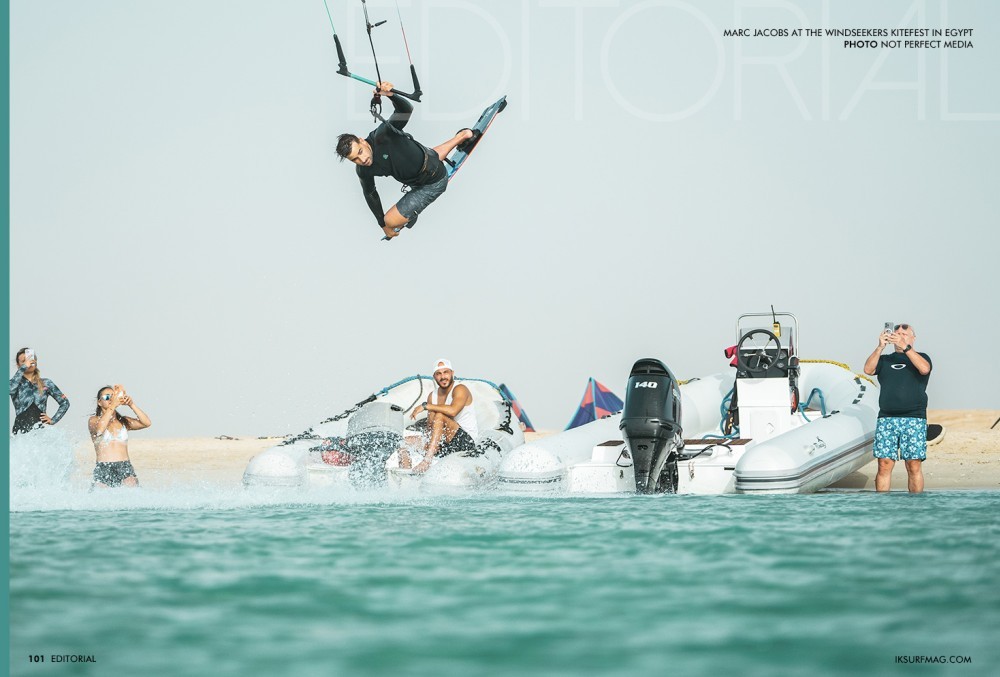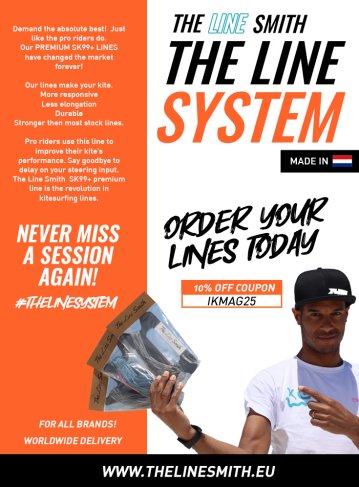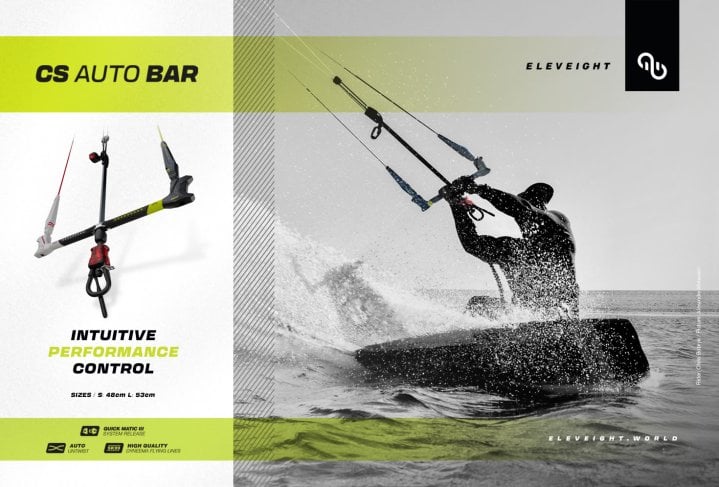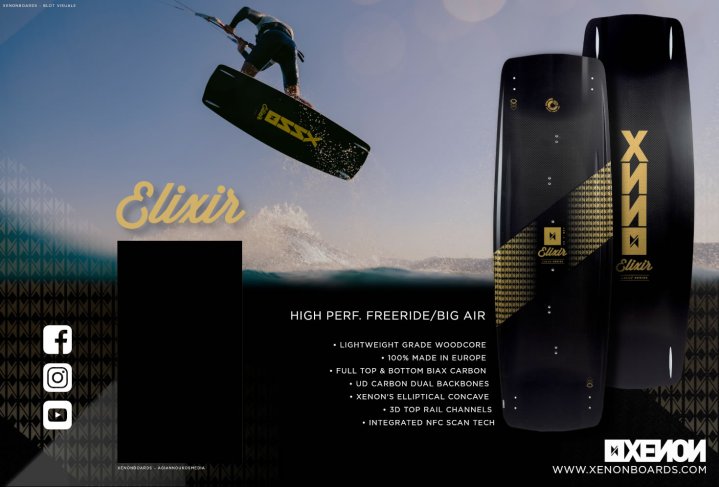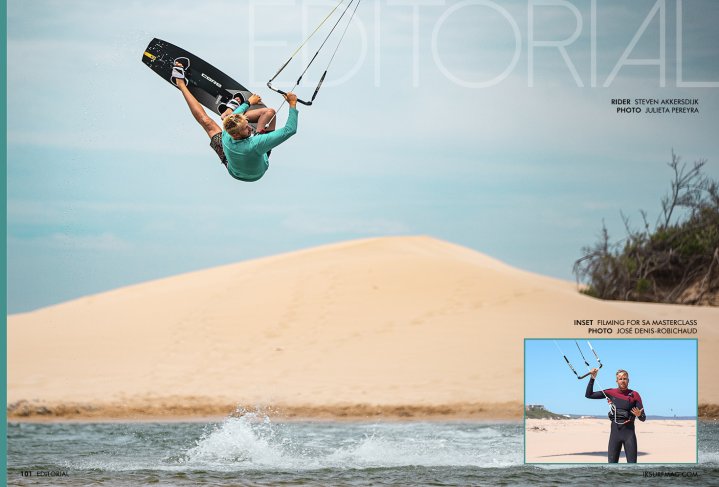
Editorial - Get Reel
Issue 101 / Thu 12th Oct, 2023
Social media has changed the kiteboarding industry, but is it for the better? Rou Chater and Crystal Veness explore the impact of social media on our sport, both positive and negative. Is social media really the answer?
Get Reel
Social media has changed the kiteboarding industry - there's no denying it. With Facebook becoming publicly accessible in 2006 and rival and soon-to-be subsidiary Instagram hitting the app stores in 2010, it didn't take long before the media consumption habits of internet and mobile users began to shift. Now, with access to immediate information, quick updates from our networks, and addictive algorithms that keep us coming back, social media is thoroughly entrenched in our everyday lives.
Having a strong social media presence has become an essential component in the success of a pro kitesurfer. The best rider in the world doesn't offer a brand much marketing value if they are invisible, while a talented but non-competitive rider with a huge social media following can make a significant impact. There are many "brand-supported influencer athletes" in the industry simply because these riders can reach so many people and relate to their following in their own unique way. These days the industry needs athletes who are on the podium and athletes who are capable of producing excellent media and content.
While we are unaware of any specific Instagram incentives in rider contracts, though we're certain they exist in some form or another, many contracts require being active on social media. When sponsor hunting, a rider that can show high engagement and vast social reach will have a much easier time sealing the deal than a rider that doesn't - barring the very best riders in the world, of course. After all, winning an international kiting event is only possible by being the best on the day. That said, you can be both the best rider in the world and go viral on social media, as Andrea Principi's unforgettable performance and personality, displayed at the recent Red Bull Megaloop, proved!
Video production in kiting also looks very different than it used to. Back in the days of VHS and DVD, kite films were hour-long epics, but viewers' attention spans have become progressively shorter and shorter. Occasionally, we still have the pleasure of watching a new feature-length film, like Laci Kobulsky's ALL IN starring Gianmaria Coccoluto, but most kite videos are made-for-YouTube exclusives. Pro kiters like Kevin Langeree, Hannah Whiteley, and Steven Akkersdijk have built impressive YouTube followings to connect with their subscribers and can even earn money from YouTube and through sponsor incentives. Today, we have instant access to video tutorials, vlogs, action edits, and short and sweet kiteboarding videos that can transport us to our dream kite spot or into the world of our favourite riders, in just a few short minutes.
The shift towards social media has had a massive impact on the magazine industry, too. We've seen several print publications shut their doors over the past couple of years and noticed clear trends in the viewing habits of our online readers, too. While our magazine is best viewed on a laptop, computer, or tablet, our team has built an excellent mobile app so that our mobile-only users can enjoy our content, too. Around 75% of all our traffic comes from mobile and we were very early to adopt this platform and create content specifically for it to ensure a good user experience.
However, how content is recorded and produced has made finding fitting content for our magazine more of a challenge than ever. While the golden days of action sports media featured high-resolution photo spreads with jaw-dropping action starring your favourite athletes, these days, most photos go straight to the socials. Many kiters and kite photographers have ditched shooting in landscape/horizontal orientation in favour of capturing images and videos exclusively in a portrait/vertical format because they are so Instagram-friendly.
Instagram's Reels, modelled after TikToks, have further accelerated the shift in kite media. These short, snappy, and easy-to-swipe bits of content have made it possible for any pro rider to reach their following with only a mobile phone. One epic trick captured on an iPhone with a cleverly chosen song to go with it can get tens or even hundreds of thousands of views in a flash, unlike your average YouTube video. As an example, one of Ellie Dimitrova's recent reels captured at the Windseekers KiteFest in Egypt has had 9.7 million views and more than 450,000 likes in just two weeks. These numbers are unprecedented, and with numbers like that, it's not hard to see why athletes and content creators have embraced social media wholeheartedly.
However, it's worth remembering the demographics for kitesurfing is predominantly an older crowd. It's an expensive sport and you need some cash behind you to be able to afford equipment and lessons. If you speak to the schools, shops and distributors, you'll learn the average customer is between 40 and 55. That's a demographic that isn't embracing social media in the same way as the youth of today. They certainly aren't on TikTok.
Going viral on social media doesn't mean reaching millions of kitesurfers, because there aren't millions of us out there. It means reaching out to an audience that doesn't kite and probably never will, but they are addicted to the never ending scroll and the algorithm that decided it was worth pushing to keep eyeballs addicted to the screen.
This over-reliance on social media by many of the brands could be seen as a mistake. Investing budgets into an audience that delivers likes and shares, but doesn't deliver sales is surely chasing a demon that won't ever deliver. An over-reliance on the youth alienates the kiters out there with the cash to walk into the shop. Even when the kids are kiting, it is likely the parents who are paying the bills.
This is all before we even get into the fakery of social media, too. It's a few clicks and a few hundred dollars to employ an army of eager click farms to make you look like a big thing. That constant engagement that brands see as a key measure is an easy buy, too, and for a lot less than you might think. It's not the brands fault if they get sucked into this trap. In a world where metrics are hard to come by, likes and shares can feel like a good form of value.
When the accountants come knocking, though, it's harder to justify. Social media is, these days, a necessary evil, and one we have wholeheartedly embraced since 2006. We post more on social than just about anyone, but we recognise we are all slaves to the algorithms and powers that be. It's an entity you have no control over and one that could switch off the taps with a tweak of the algorithm at any moment. Today's hot viral vid very quickly becomes yesterday's news. What's hot right now becomes colder than ice in a week.
We, and many of you, are not quite ready to let go of long-form content! We still love kicking back and watching a carefully created kite film and flipping a magazine's physical or virtual pages as we enjoy stories from our favourite riders. Yes, swiping, scrolling, and tapping have become one of the easiest ways to stay in the know in the kite industry, but quality content will always have a home as long as people are willing to consume it.
When people say we have a short attention span and only want a 30 second clip, consider the last time you watched a series on Netflix with 10 episodes at an hour each; that's a serious investment of your time. Think of the latest podcast that kept you entertained while you spent hours battling with traffic on the way to your favourite kite spot. It's easy to hear the social bigwigs scream and shout about short format portrait viral gold, but there is a strong undertow for the longer form of media. And, guess what? If you've read this far, that's likely to be you, and you'll be part of the crucial buying demographic the industry needs to tap into but seems in danger of forgetting…
Social media is definitely part of the mix, but it isn't a magical unicorn that will cure a brand's woes, and far from it. Somedays, it feels more like the emperor's new clothes than the golden messiah. As much as Mr Zuck tries to be cool foiling and flying an American flag, he's not the kind of guy who's gonna chat to you at a demo on your local beach, so why the rush to fill his pockets over the hardworking people of the kite industry?
What do you think? What kind of content gets you excited? Do you prefer short or long-form content or a bit of both? What kind of stories do you want to read, and what kind of videos do you want to watch? Let us know so we can keep working to bring you the content you want to see in future issues of IKSURFMAG! Slide into our DMs or shoot us an email at editorial@iksurfmag.com. We want to hear from you!
Crystal Veness & Rou Chater
By IKSURFMAG


